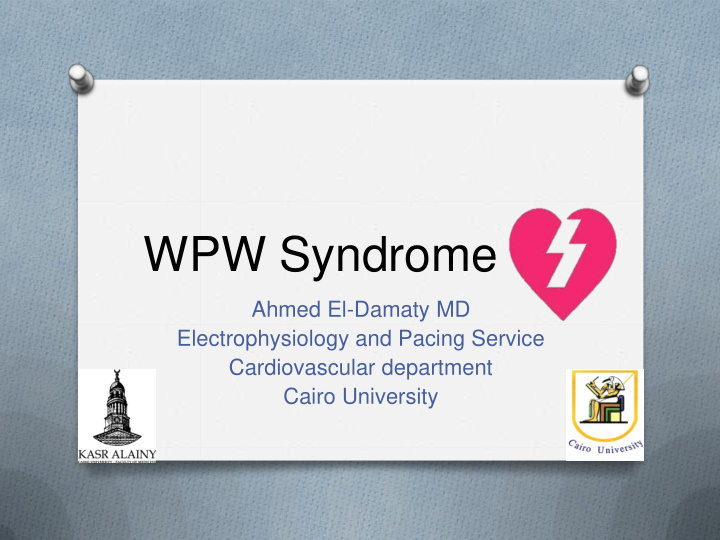



WPW Syndrome Ahmed El-Damaty MD Electrophysiology and Pacing Service Cardiovascular department Cairo University
Louis Wolf, John Parkinson and Paul White
How Can WPW syndrome harm your patient? O Tachycardia O SCD
AP mediated-tachycardias Bystander: e.g SR or AT/AF
Orthodromic AVRT
Antidromic tachycardia
SCD
Risk stratifying the Asymptomatic patient O ECG O EST O EP study
Long term management O Catheter based ablation is indicated for: O Symptomatic patients O Patients who are deemed to be high risk
Localizing APs
ECG Localization of AP Arruda et al. J Cardiovasc Electrophysiol. 1998 Jan;9(1):2-12
Where is this AP?
Where is this AP?
35 years old gentleman with recurrent heart racing episodes
Catheter setup
HV
AVRT
Earliest activation site
No conduction from the ventricle to the atrium
ECG post ablation
Accessory pathways variants
Accessory Pathway variants 1- APs with His-Purkinji Connections: Atrio-fasicular fibres Nodo-fasicular fibres Nodo-ventricular fibres Fasiculo-ventricular fibres 2- APs with atypical course: Coronary sinus Atrial appendage to ventricle Oblique APs 3- APs associated with structural heart disease: Epstein anomaly Persistent left superior vena cava 4- Multiple APs
Atriofasicular/ventricular fibers
Antidromic AVRT
Surface ECG during AVRT
Successful ablation site of the atriofasicular variant
FV V A A H V H His Catheter
Regular AP H V A A H V His Catheter
Thank you
Recommend
More recommend